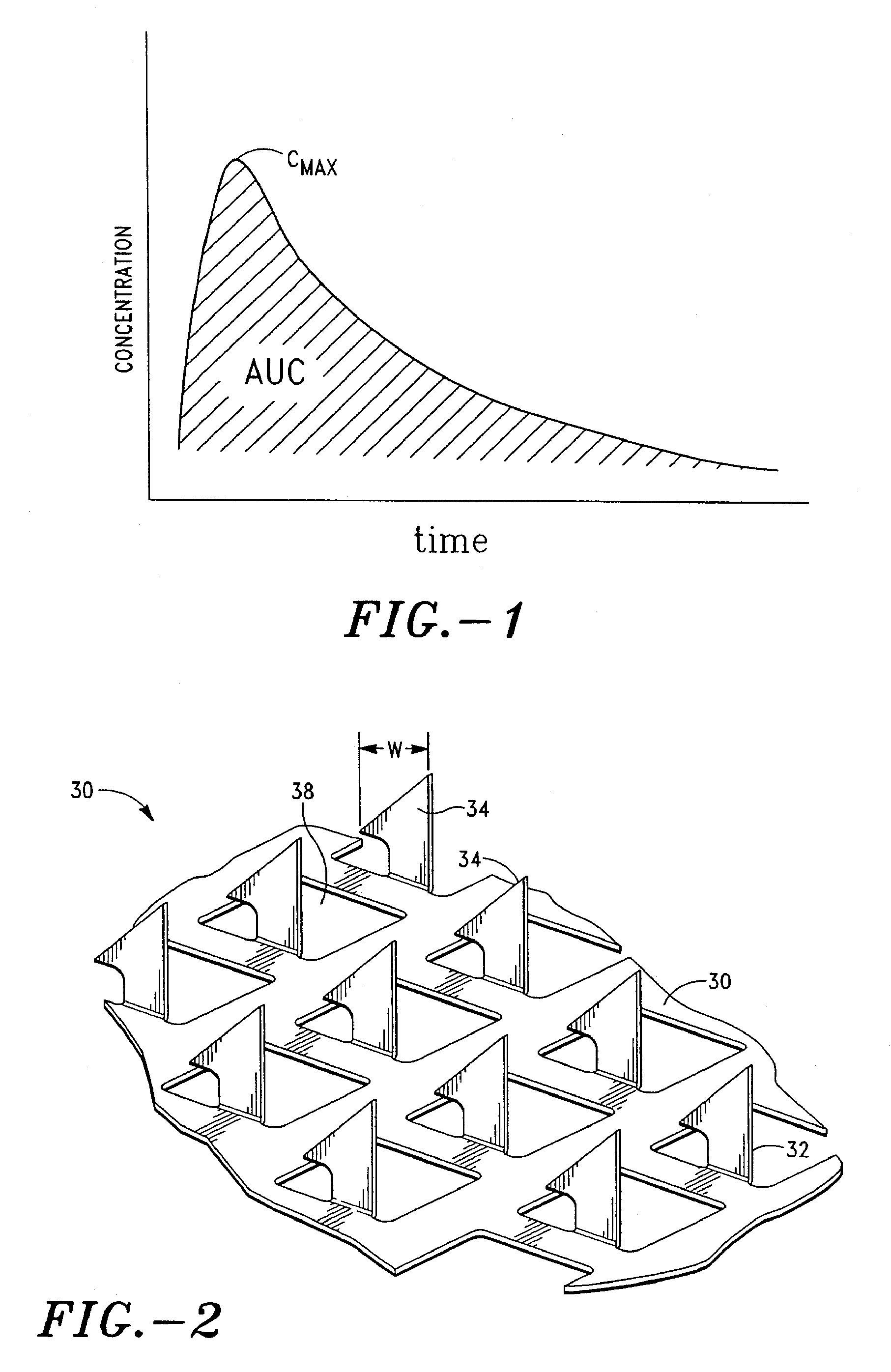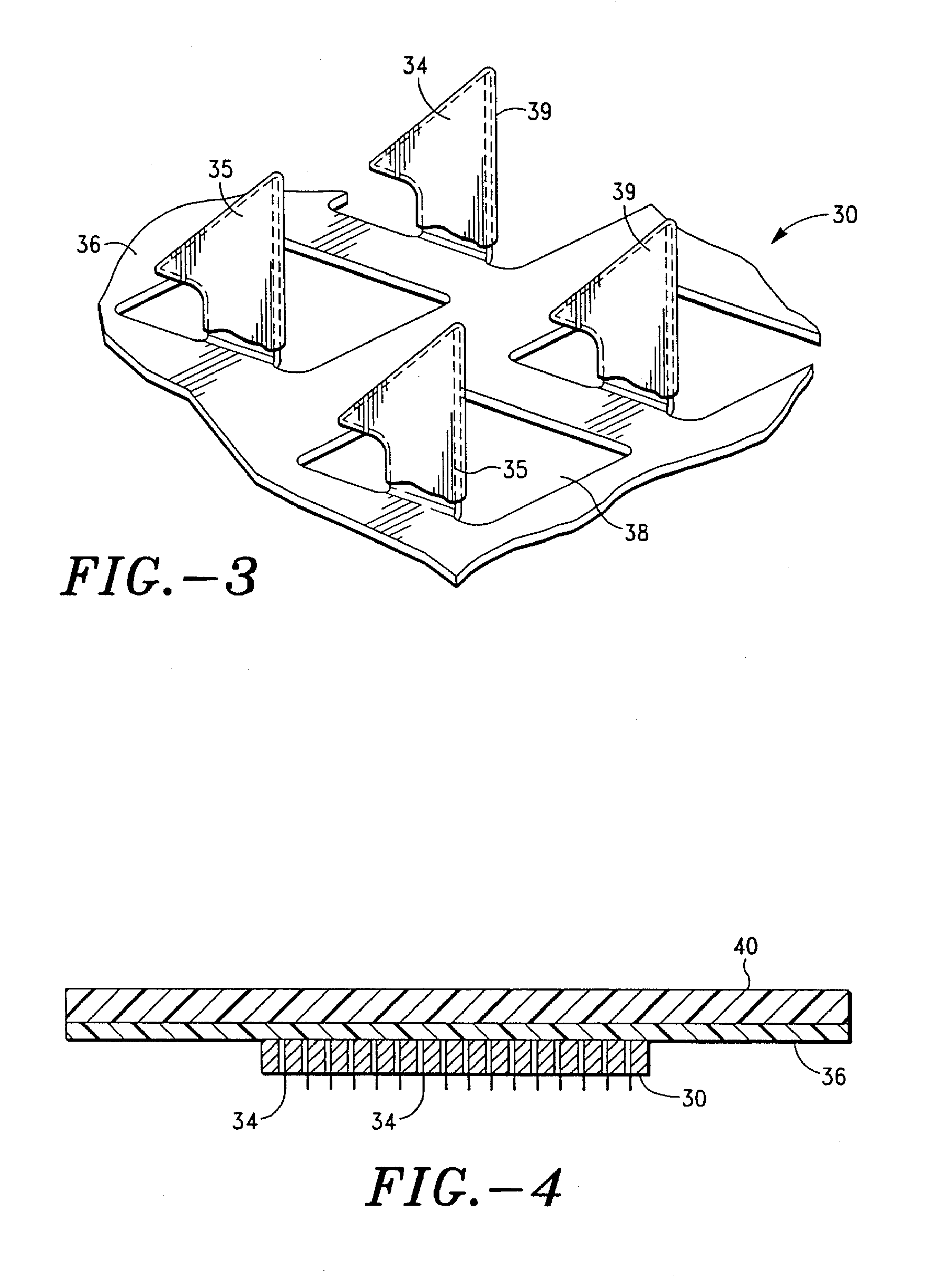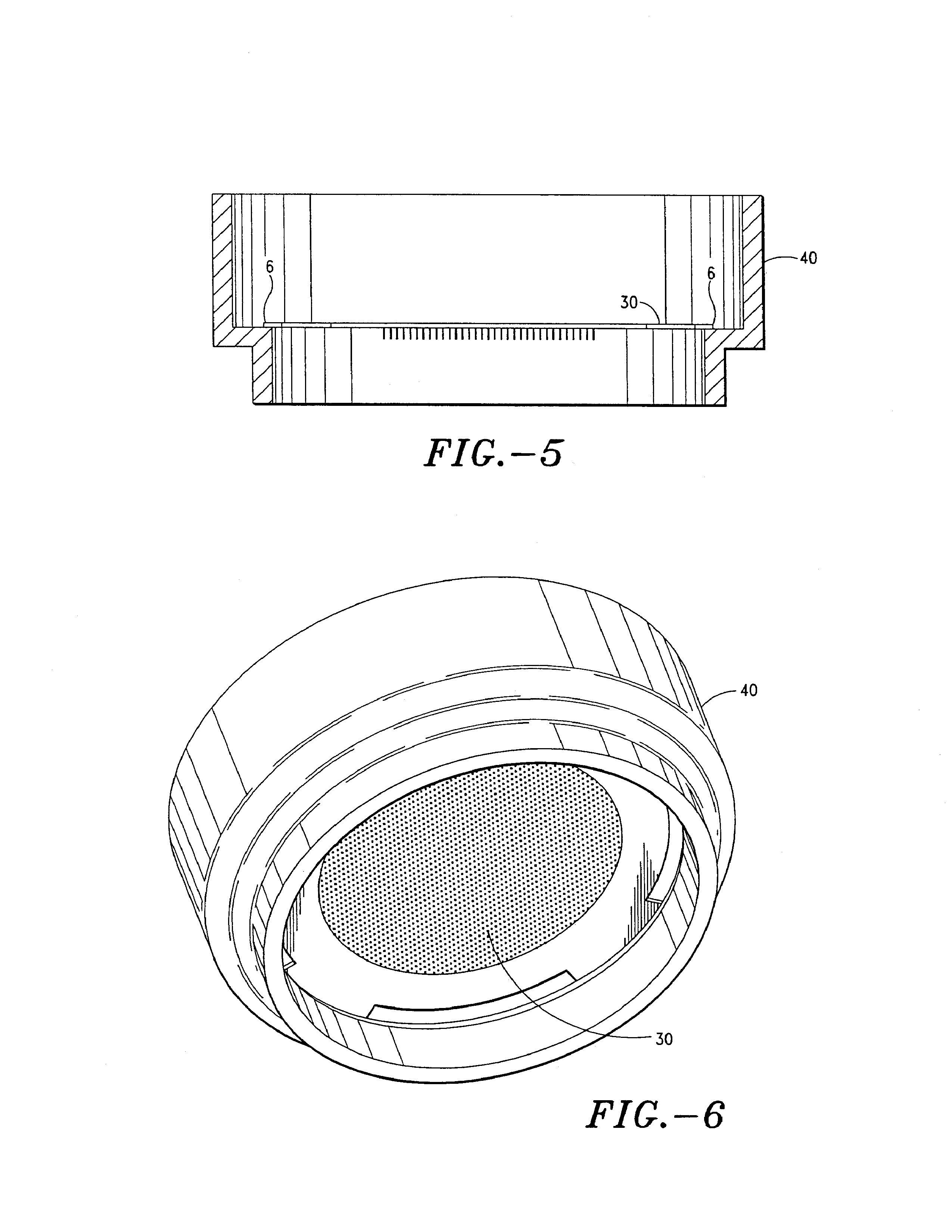Apparatus and method for transdermal delivery of parathyroid hormone agents
a parathyroid hormone and applicator technology, applied in the field of applicator and method for transdermal delivery of parathyroid hormone agents, can solve the problems of poor patient compliance, limited application of transdermal delivery, and many active agents are completely ineffective or have radically reduced efficacy, so as to improve the biocompatibility of the microprojection member 30 and minimize or eliminate bleeding and irritation, the effect of improving biocompatibility
- Summary
- Abstract
- Description
- Claims
- Application Information
AI Technical Summary
Benefits of technology
Problems solved by technology
Method used
Image
Examples
example 1
[0201]Delivery of hPTH (1-34) from coated microprojection arrays was evaluated in a hairless guinea pig (HGP) model. Microprojection arrays were produced using photo / chemical etching, and forming. The microprojection arrays used in this study were 2 cm2 in area, with 320 microprojections / cm2 and a projection length of 200 μm.
[0202]The microprojection arrays were coated with a 25% aqueous solution of hPTH (1-34) at 40±10 μg per 2 cm2 array, with a solid coating limited to the first 100 μm of the microprojections. Each coated microprojection array was assembled to a flexible polymeric adhesive backing. The resulting patch was assembled onto a retainer ring and loaded on a reusable impact applicator at the time of application to the HGP.
[0203]Each anesthetized HGP received a patch that was applied to a clean skin area for a wearing time of 1 hour. At various time intervals following patch application, blood samples were taken. Plasma hPTH (1-34) levels were determined using an enzyme i...
example 2
[0209]Example 2 demonstrates the utilization of a weak acid with a hPTH (1-34) agent to enhance the viscosity. The interaction of the weak acid anion with the positively charged a hPTH (1-34) agent leads to the formation of secondary bonds, e.g. hydrogen bonds, which results in an increase in solution viscosity. The greater the number of acidic groups, the greater the number of secondary bonds formed between the anions and the hPTH (1-34) agent, hence the greater the viscosity increase. Thus, the theoretical viscosity enhancing capabilities increase when monoacids, di-acids, tri-acids and tetra-acids are compared.
[0210]Various weak acid buffers have been incorporated in the hPTH (1-34) formulations in this experiment. A control formulation including PTH (1-34) actate with sucrose was also prepared. The experiment investigated the physicochemical properties afforded to hPTH (1-34) by various mixtures of mono-, di- and tri-acids and the stability of the solution formulations over a 48...
example 3
[0214]Example 3 demonstrates the utilization of a mixture of counterions with a hPTH(1-34) agent to enhance the dissolution of hPTH-based agent in vivo.
[0215]In a solid coating on a microprojection array, the agent is typically present in an amount of less than about 1 mg per unit dose. With the addition of excipients and counterions, the total mass of solid coating can be less than 3 mg per unit dose.
[0216]The array is usually present on an adhesive backing, which is attached to a disposable polymeric retainer ring. This assembly is typically packaged individually in a pouch or a polymeric housing. In addition to the assembly, this package contains an atmosphere (usually inert) that represents a volume of at least 3 mL. This large volume (as compared to that of the coating) acts as a sink for any volatile component. For example, at 20° C., the amount of acetic acid present in a 3 mL atmosphere as a result of its vapor pressure would be about 0.15 mg. This amount is typically what w...
PUM
| Property | Measurement | Unit |
|---|---|---|
| microprojection thickness | aaaaa | aaaaa |
| microprojection length | aaaaa | aaaaa |
| pH | aaaaa | aaaaa |
Abstract
Description
Claims
Application Information
 Login to View More
Login to View More - R&D
- Intellectual Property
- Life Sciences
- Materials
- Tech Scout
- Unparalleled Data Quality
- Higher Quality Content
- 60% Fewer Hallucinations
Browse by: Latest US Patents, China's latest patents, Technical Efficacy Thesaurus, Application Domain, Technology Topic, Popular Technical Reports.
© 2025 PatSnap. All rights reserved.Legal|Privacy policy|Modern Slavery Act Transparency Statement|Sitemap|About US| Contact US: help@patsnap.com



